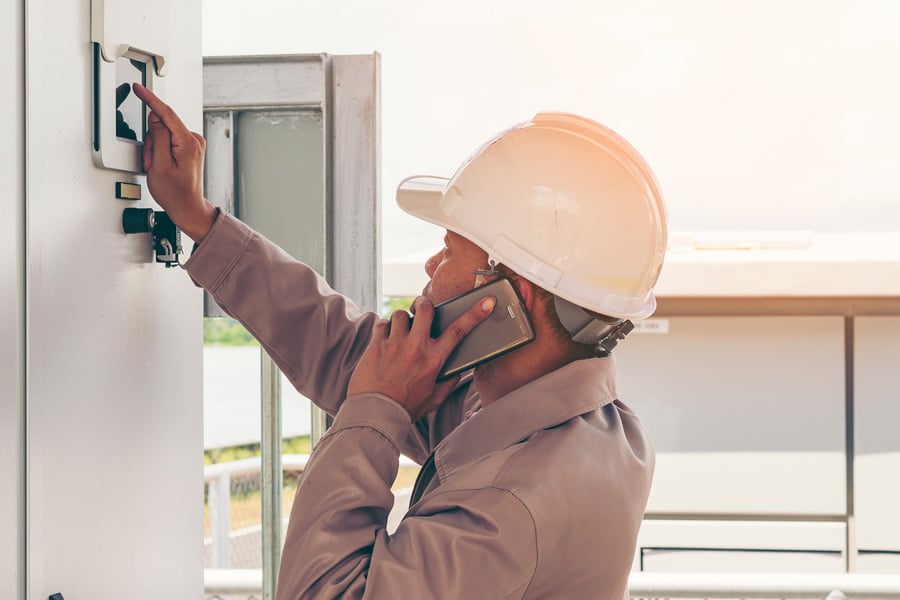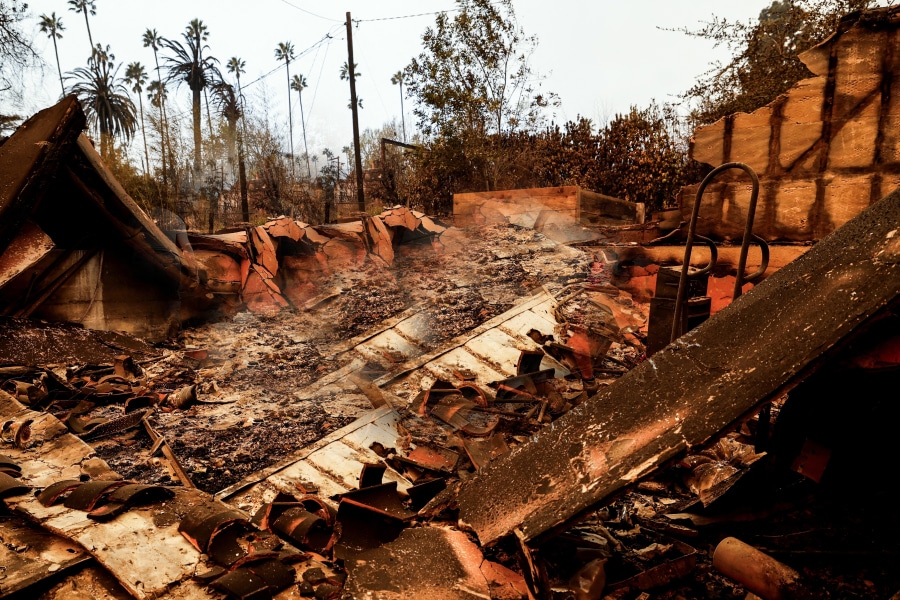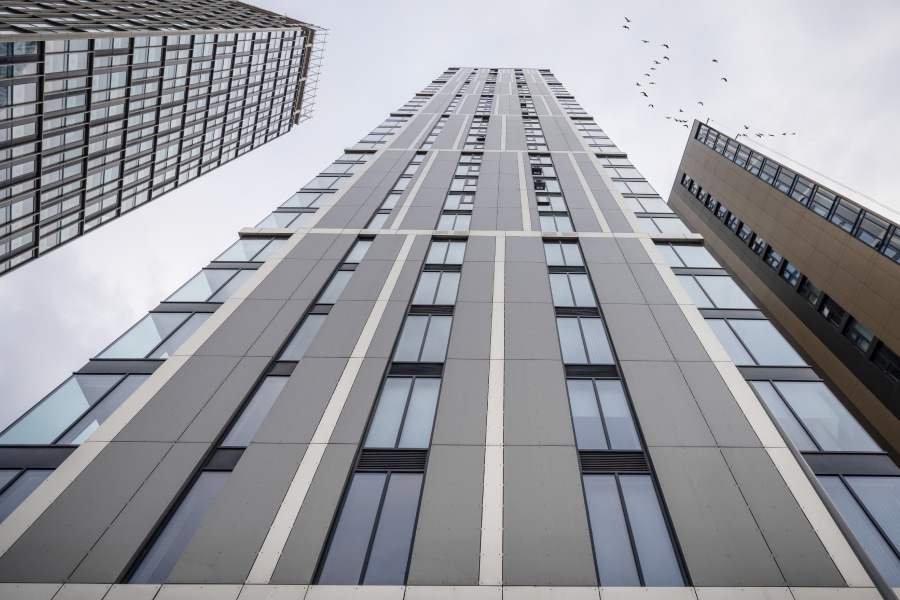The COVID-19 pandemic has the construction industry thinking about air flow—a surprisingly powerful technique for limiting the spread of airborne pathogens. Research shows that controlling for ventilation can dramatically reduce the spread of infections like COVID-19. This is an invaluable finding as the world seeks to return to normal.
According to Dan Holohan, the author of many books on heating and air flow, including the classic text “The Lost Art of Steam Heating,” 2020 wasn’t the first time America focused on the harm reduction potential of heating technologies. In fact, the history of HVAC is closely tied to the way we think about health, the body and disease reduction in urban environments.
Influential influenza
Holohan said that he first discovered the connection between HVAC history and epidemiology when researching the origins of modern steam heat.
“When I was researching ‘The Lost Art of Steam Heating,’ I got into the engineering texts of the 1920s,” Holohan said. He noticed that the texts cautioned designers and contractors of the steam heat systems of that era that they needed to be aware of the importance of air flow to meet the demands of the growing “Fresh Air Movement.”
“Suddenly, they begin to caution that we need to now design systems for the coldest day of the year with the wind blowing and the windows open,” Holohan said.
After doing a little digging, Holohan discovered that this movement originated with the 1918 influenza epidemic. Even before the epidemic, in the early days of the American city, Holohan said that “flu and tuberculosis were the two greatest causes of death in America. Now you’ve got this particular virulent flu, the Spanish influenza, which is spread by breathing and coughing. In the winter of 1919, the Anti-Tuberculosis League and the boards of health in a number of big cities in America started mandating that people keep their bedroom windows open to prevent flu,” including Spanish influenza.
Suddenly, the engineers working in these cities were forced to dramatically increase the capacities of the heating systems they installed to allow for open window ventilation. “They realized that if people were going to open their windows, they needed to size systems for open ventilation,” Holohan explained. “They couldn’t use existing systems, which wouldn’t work if people had their windows open.”
The fresh air cure
Most Americans share the belief that fresh air is good for you. But where did that belief come from? And how did it become a movement powerful enough to influence an entire trade?
“The idea that you need fresh air has its roots back in the Civil War years,” Holohan said. “Back then, we built tenement buildings very closely together to keep them warm. But after the Civil War, people started asking questions about why so many had died from being in close quarters. They still didn’t know what germs are at this point because Pasteur hadn’t figured out germ theory yet.”
ALSO ON BUILT:
The idea that fresh air was the cure for illness spreading in close quarters became popular when Lewis Leeds, a man Holohan described as “the Dr. Fauci of his day,” (in reference to the immunologist who serves as the director of the U.S. National Institute of Allergy and Infectious Diseases) wrote a book called “Leeds on Ventilation.”
“He starts to pontificate about what he called the national poison—the air that was coming off of gas fires and coal fires and people just breathing, and the vapors that were coming out of their bodies,” Holohan said.
The book caught the attention of Harriet Beecher Stowe, the author of the literary classic “Uncle Tom’s Cabin,” who was one of the most famous women in America at the time. She used her creative talents to pair up with Leeds and create a touring magic lantern show to educate the public about the dangers of bad air.
“They’re traveling the country, warning people about the danger of being in buildings with closed windows,” Holohan said. They would illustrate their argument with a gruesome narrative of family tragedy. “Mom and dad are sitting in a parlor, and dad’s smoking his pipe in a rocking chair, and mom’s knitting. Coming off the dad’s mouth is this red vapor that twirls and moves across the floor like it’s miasma. They showed the baby crawling into the bad air, and in the next slide, the baby flops over dead.”
Stowe and Leeds took their show on the road, exhibiting it at schools and parent meetings. “This is what in the 1870s and the 1880s starts to lead to this change we see in the way we design buildings,” Holohan said. “Suddenly we’ve got air shafts, and we’ve got more windows, and we’ve got more ventilation coming in.”
Fresh air had officially been established as an important tool for public health.
The future of fresh air
Holohan said that part of the difficulty of creating well-ventilated spaces to reduce disease transmission is that designers have forgotten the value of fresh air. The idea of opening a window to let some air in is one of the simplest available public health tactics—one of the reasons that, once the 1918 pandemic became a distant memory, it was so easy to forget.
In fact, in the years leading up to the emergence of COVID-19, Holohan explained that buildings were actually designed to conserve energy by minimizing air flow between the inside and outside worlds. Building for energy efficiency, he said, leads to the idea that “we’re going to have to look for higher and higher efficiencies and tighter and tighter buildings. We start to build buildings where the windows don’t open at all. We’ve got these wonderful heat exchanges that exchange the inside air with the outside air and still keep the heat in the same place. We’re doing all this, but nobody is planning for a pandemic.”
As a result, old buildings may actually be more efficient at preventing the spread of this modern disease. “What’s crazy is the buildings that were built in 1890 are actually doing better on air-flow tests than the modern buildings because they have leaky windows,” Holohan said. The buildings that are really old are performing brilliantly in the midst of this pandemic.”
As more people are vaccinated for COVID-19, Holohan said that ventilation can provide a simple solution to reducing the spread of the virus. “Until we get everybody vaccinated and reach herd immunity, a simple cure is to just open a window like they did after the Spanish influenza,” he said.
Creating well-ventilated spaces may be the key to our survival—through this pandemic and beyond.












